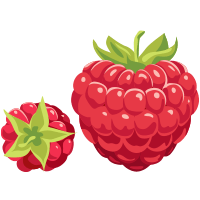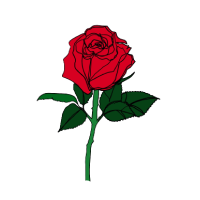Fresh, floral and focused with beautiful red berries and herbs in both taste and aroma. It all combines elegantly with a light bitterness in a beautifully concentrated rosé wine.
92 POINTS
Vinous
Gorgeous, sweetly cherry-fruited and inviting.
The 2023 Rosato Rosabella is gorgeous, sweetly cherry-fruited and inviting. Nebbiolo lends considerable structure to this Rosé, wrapping blood orange and rose petal tones in a fine web of powdery tannins. Tart, lemony acidity provides a bracing structure, but the mouthfeel remains so round and harmonious. Vajra always represents solid value in Piemonte, and this is certainly no different.
About G.D. Vajra
G. D. Vajra is actually a relatively new winery for the region – and probably the first in Piedmont to work with organic viticulture. It is beautifully located, surrounded by the Alps at a relatively high location close to the town of Barolo itself. Here the grapes grow slowly and carefully and get very fine, fruity notes in the wines. The last kilometers by car towards the Vajra family’s vineyard are pure pleasure for the eyes and the joy of anticipation. The roads from Barolo town up into the soft mountains are winding and narrow and lead just before the farm past G.D. Vajra’s best vineyard. Strong vines grow here, which year after year deliver perfect Barolo wines. However, it is only when the car is parked in the dusty courtyard and Giuseppe Vajra, or one of the other family members, steps through the door that the soul of the place really shows itself. Because in this family-owned wine dynasty, a reunion is like a hug.
Life is beautiful
Barolo wine is surrounded by style and class. Even if you don’t necessarily know much about wine, you probably know the word “Barolo” and maybe even associate it with expensive but delicious wine that serious wine drinkers enjoy. However, the approach at Vajra is slightly different. It must be wine that brings joy and is for everyone under the slogan “Life is beautiful” – life is beautiful. This can be seen in the labels, which are not serious, serious looking, but rather vibrant and colorful. They should be wines you drink on an average Tuesday night, not wines you have to save up for and drink once a year. That is why Vajra has not raised the prices either, despite the fact that the Italians have won several awards precisely for their Barolo wines.
Wine is terroir
From the 1970s, interest in Single Vineyard wines grew enormously. But Albe Barolo is a blend. “Albe” means “the sun rises” and the wine must be understood precisely as an expression of the area more than a single vineyard. The love for the area is enormous – and it shows. The soil is old seabed and rich in fossils and limestone with a small amount of sand. This gives the wines an unmistakably fresh expression and a certain acid-based backbone, more than tannins, which you will typically find in other Barolo wines. This is important to remember when choosing your Barolo.
Burgundy in Italy
The wines can best be recognized by their slightly cool and elegant style, which is due to the fact that a large part of the fields are located at an altitude of 400 metres. These are wines with a wine minerality that many appreciate. Several of the wines may even have a touch of Burgundy to them with their light, elegant, fruity style with red berries at the centre. It is also genuine Barolo, which many of us love. G. D. Vajra’s winery is located in Vergne, the highest village in the western Barolo area, just three kilometers from the center of Barolo. It was founded in 1972 and is named after Giuseppe Domenico, the father of the current owner, Aldo Vajra. Since taking over the daily management of the winery, Aldo has gradually increased the area of vineyards to today’s 40 ha, of which 10 are planted with Nebbiolo and located in vineyards such as Bricco delle Viole, Fossati, La Volta and Coste di Vergne. Despite its elegant and cool style, Vaira should be considered a traditionalist for the area – albeit with certain modifications, since Aldo Vajra, among other things, temperature controls its fermentation and uses a very limited proportion of barriques (typically 5-8%).
Nebbiolo, Dolcetto and Barbera, Freisa and Riesling grow here. G. D. Vajra stands for Giuseppe Domenico, Aldo Vajra’s father, who signed the foundation documents for the winery in 1972, when Aldo himself was still a minor. His wife Milena joined the company in the 1980s and together they managed to bring the initially small company to world fame for the production of Barolo. The wines are traditionally characterized by a longer maceration and are predominantly aged in Slovenian casks. Vajra’s red wines are made with fairly long skin contact. An ancient technique is used, where the grape skins are pressed down as if in a kind of giant plunger, so that you get a “submerged cap”. It actually helps to explain the slightly light color of the wines, although it sounds strange and very contrary to those who know a little about wine production. But this is because some of the dyes are simply reabsorbed into the grape skins. At the same time, it produces more stable, clean wines with great storage potential.



